The use of Pearsall's is a modern thing, probably from Edmonds & lee in 1932. I believe that they would have used ordinary silk threads common in households of that day.narcodog wrote:This brings a question to mind. The silk used in the olde days was it always Pearsall's , was there other brands. twists and denier used?
Orange & Partridge (1800's) - Dark Watchet Follow up
Moderators: William Anderson, letumgo
-
flyfishwithme
Re: Orange & Partridge (1800's) - Dark Watchet Follow up
Re: Orange & Partridge (1800's) - Dark Watchet Follow up
Hi Philip,
Quite a few ties back then seemed to be heavily hackled by todays standard. Most of the ties in Courtney Williams 1949 book would be considered way overhackled. All of the plates in the book are of actual tied flies, but were tied large scale, and then the overall plate/picture reduced so it would fit into the book. There's a partridge and yellow tied by Skues in there that Williams states has just the right amount of hackle. On this forum, it would be considered WAY TOO MUCH. Williams favorite has a huge amount as well, and that just had to be tied the way his father had tied it. If I tied it that way and posted it here, I'm sure someone would comment on it as just way too much hackle as to whats acceptable.
Narcodog- Pearsall's wasn't the only silk thread available or used back then. I have a spool of Rice 4/0 in black, and a bunch of silk thread about the same diameter as Pearsall's in different colors that are wound on half of an early 1920's Christmas card from that same time period, only it was on this side of the Atlantic. It may have come from Europe originally though.
Regards,
Mark
Quite a few ties back then seemed to be heavily hackled by todays standard. Most of the ties in Courtney Williams 1949 book would be considered way overhackled. All of the plates in the book are of actual tied flies, but were tied large scale, and then the overall plate/picture reduced so it would fit into the book. There's a partridge and yellow tied by Skues in there that Williams states has just the right amount of hackle. On this forum, it would be considered WAY TOO MUCH. Williams favorite has a huge amount as well, and that just had to be tied the way his father had tied it. If I tied it that way and posted it here, I'm sure someone would comment on it as just way too much hackle as to whats acceptable.
Narcodog- Pearsall's wasn't the only silk thread available or used back then. I have a spool of Rice 4/0 in black, and a bunch of silk thread about the same diameter as Pearsall's in different colors that are wound on half of an early 1920's Christmas card from that same time period, only it was on this side of the Atlantic. It may have come from Europe originally though.
Regards,
Mark
Re: Orange & Partridge (1800's) - Dark Watchet Follow up
That must be more like a mini-streamer when it is in the water!flyfishwithme wrote:Okay, I got to do it early.
The following image is of a fly given to me from a collection dating back to the middle 1800's. Apologies for the state of it, it has been flattened in a packet.
Some observations:
1. You can see how heavily hackled it was suggesting that this tier used more of the feather than is generally accepted.
2. The hackles are longer than what is stated in many later writings, suggesting to me that the tiers of old probably used more of the skins and wings than we expect.
It suggests two things to me: 1) Trout can be quite stupid things, and 2) We need to keep a sense of humour and a wry smile regarding our search for fly dressing 'authenticity'!
GlassJet
"Inspiration exists, but it has to find you working." ~ Pablo Picasso 8)
Re: Orange & Partridge (1800's) - Dark Watchet Follow up
I'm curious as to the leader being attached to the top of the hook shank. Standard for the era? Or just tyer's preference?
I hate it when I think I'm buying organic vegetables, and when I get home I discover they are just regular donuts.
http://www.oldhatflytying.com
http://www.oldhatflytying.com
-
flyfishwithme
Re: Orange & Partridge (1800's) - Dark Watchet Follow up
The leader here is gut (and pretty thick too) and I would have thought it was pretty standard to tie it in on the top. Remember these were tied in the hand most probably so it would have been the easiest to do. The gut was also chewed a bit right at the end to give the thread purchase on it.Old Hat wrote:I'm curious as to the leader being attached to the top of the hook shank. Standard for the era? Or just tyer's preference?
Re: Orange & Partridge (1800's) - Dark Watchet Follow up
Philip,
thanks for the historic piece.
Regarding the views here, I will chip in with some of mine.
I was sniffing through the Dictionary the other day and note that there is a reference to
Halford's - Floating Flies (1886), where he recommends the use of Pearsall's silk for all flies as it is in his view the best. . Reminded me of these postings.
Considering the popularity of his work I would suggest that Pearsall's would thereafter become the benchmark.
Pearsall's then gives us a standard, in shades, besides in density, as would have any other brand.
As to how old silk usage in flies is, I would suggest that silk has been generally available for many centuries, being traded globally via the ancient Silk Route from the Far East to Western Europe.
Of course not everyone would have access to silks and would have used whatever they had or preferred, like the rest of us; I started with sewing threads, split down to two of four strands, waxed, of course.
Nettle hemp and flax, besides wools from various animals could have been used.
Next, thickness of body; I reckon they should be as skinny as possible,
I think it was Lawrie who said the fish will see what he wants to see , thus less is more. The fish must judge, mine like skinny and minimal bodies.
The gut on a snelled hook should 'always' be within the gape, thus giving a direct strike.
Dame Juliana describes the fastening without giving any reason.
Skues insists on the method.
Tying in the hand is easier with the gut inside the shank;
will also produce a stronger fly, from my hand.
As to the proportions of this fly;
I think it is tied as a spinner, definitely by an amateur tyer(see note on snelling)
perhaps he used what was available, large hackle, none smaller being to hand.
I would happily use that profile for a BWO hatch; well, an Orange Quill is generally prescribed..
I generally see my soft hackles as nymphs, thus use little hackle and that short.
For flies to imitate duns and spinners more hackle is the preference, in this case paler in shade.
Tying flies very full hackled is a necessity of commercialism, allowing the angler to remove fibres to get the density he requires. Adding would be impossible.
Starting with dense hackling would allow the fly to last longer, even if it took a while to become attractive to the fish; in this case we start off with a dun/spinner imitation, attractive in the first instance, and after a dozen fish, use it as an emergent nymph.
When this fly was built there was no 'dry fly' code. The large soft hackle may have been designed to facilitate easy hookups on a big lightweight fly.
Considering its size, I guess the tyer put the gut on the outside of the shank to retain the hook gape. That takes the 'always' out of the statement on snelling above
Finer gut would have been expensive and frail.
It is well built, in that those few wraps have to build the fly and hold the fish, yet it retains a slim profile and a clean and small head.
That is just my 2cents, I am no expert.
I am finding it hard to get into a mindset of a century and a half ago in this case,
as the fly will do so many things, depending how tattered it becomes.
Thanks for the extremely interesting thread,
regards,
Roy
thanks for the historic piece.
Regarding the views here, I will chip in with some of mine.
I was sniffing through the Dictionary the other day and note that there is a reference to
Halford's - Floating Flies (1886), where he recommends the use of Pearsall's silk for all flies as it is in his view the best. . Reminded me of these postings.
Considering the popularity of his work I would suggest that Pearsall's would thereafter become the benchmark.
Pearsall's then gives us a standard, in shades, besides in density, as would have any other brand.
As to how old silk usage in flies is, I would suggest that silk has been generally available for many centuries, being traded globally via the ancient Silk Route from the Far East to Western Europe.
Of course not everyone would have access to silks and would have used whatever they had or preferred, like the rest of us; I started with sewing threads, split down to two of four strands, waxed, of course.
Nettle hemp and flax, besides wools from various animals could have been used.
Next, thickness of body; I reckon they should be as skinny as possible,
I think it was Lawrie who said the fish will see what he wants to see , thus less is more. The fish must judge, mine like skinny and minimal bodies.
The gut on a snelled hook should 'always' be within the gape, thus giving a direct strike.
Dame Juliana describes the fastening without giving any reason.
Skues insists on the method.
Tying in the hand is easier with the gut inside the shank;
will also produce a stronger fly, from my hand.
As to the proportions of this fly;
I think it is tied as a spinner, definitely by an amateur tyer(see note on snelling)
perhaps he used what was available, large hackle, none smaller being to hand.
I would happily use that profile for a BWO hatch; well, an Orange Quill is generally prescribed..
I generally see my soft hackles as nymphs, thus use little hackle and that short.
For flies to imitate duns and spinners more hackle is the preference, in this case paler in shade.
Tying flies very full hackled is a necessity of commercialism, allowing the angler to remove fibres to get the density he requires. Adding would be impossible.
Starting with dense hackling would allow the fly to last longer, even if it took a while to become attractive to the fish; in this case we start off with a dun/spinner imitation, attractive in the first instance, and after a dozen fish, use it as an emergent nymph.
When this fly was built there was no 'dry fly' code. The large soft hackle may have been designed to facilitate easy hookups on a big lightweight fly.
Considering its size, I guess the tyer put the gut on the outside of the shank to retain the hook gape. That takes the 'always' out of the statement on snelling above
Finer gut would have been expensive and frail.
It is well built, in that those few wraps have to build the fly and hold the fish, yet it retains a slim profile and a clean and small head.
That is just my 2cents, I am no expert.
I am finding it hard to get into a mindset of a century and a half ago in this case,
as the fly will do so many things, depending how tattered it becomes.
Thanks for the extremely interesting thread,
regards,
Roy
-
flyfishwithme
Re: Orange & Partridge (1800's) - Dark Watchet Follow up
Roy, Thanks for that. Very enlightening.
I do not know who tied the fly. It is part of a collection from a friend of mine in the States that has a Swarbrick manuscript which came from someone who left Chester and migrated to the States. He could have tied it.
By thanks again.
I do not know who tied the fly. It is part of a collection from a friend of mine in the States that has a Swarbrick manuscript which came from someone who left Chester and migrated to the States. He could have tied it.
By thanks again.
Re: Orange & Partridge (1800's) - Dark Watchet Follow up
Thanks Roy for the follow up and insight.
I hate it when I think I'm buying organic vegetables, and when I get home I discover they are just regular donuts.
http://www.oldhatflytying.com
http://www.oldhatflytying.com
Re: Orange & Partridge (1800's) - Dark Watchet Follow up
I would assume all of those earlier flies were likely hand tied (?) and as those guys probably didn't have hackle pliers (?) so fingers would have been order of the day?
There was probably a lot of variation in hackles - length and thickness - from various tiers and areas, then as now.
From my collection; Possibly tied by Walbran around 1899. Some of you would have seen these old flies before:
Waterhen Bloa
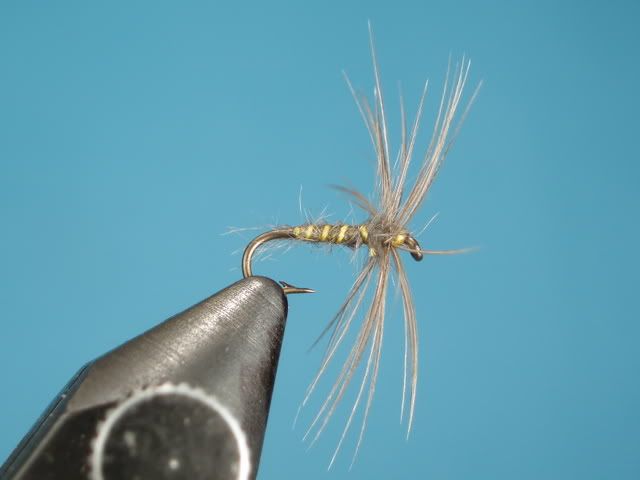
Partridge and Orange
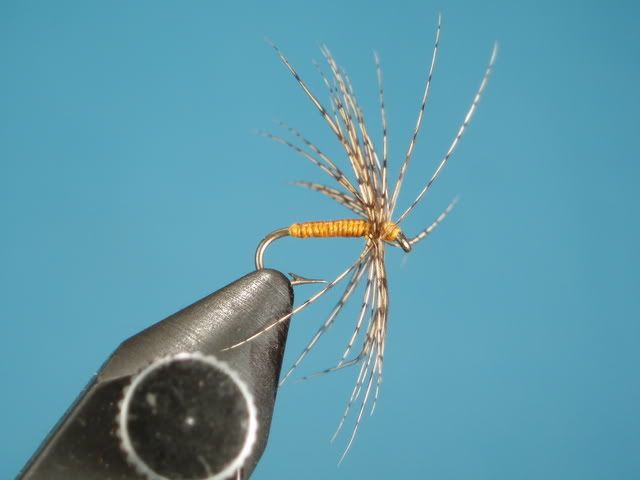
Brown Owl
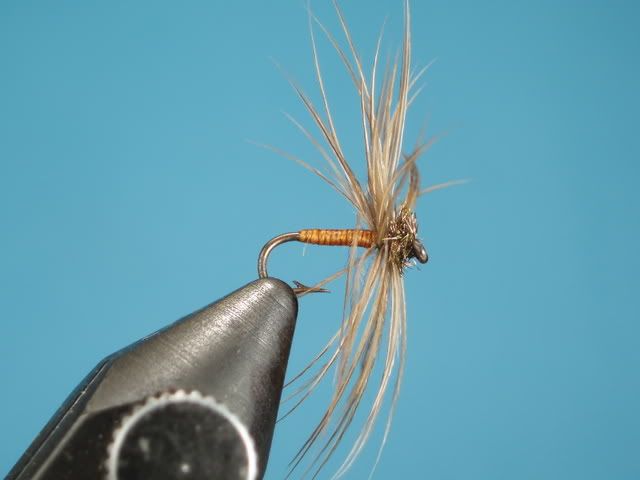
Dark Tweedle
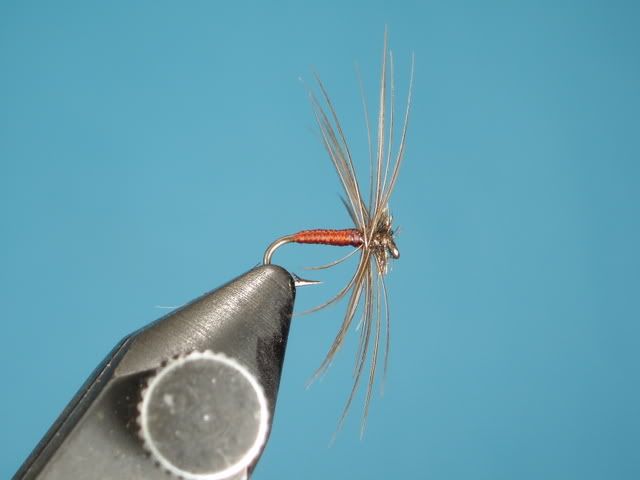
There was probably a lot of variation in hackles - length and thickness - from various tiers and areas, then as now.
From my collection; Possibly tied by Walbran around 1899. Some of you would have seen these old flies before:
Waterhen Bloa

Partridge and Orange

Brown Owl

Dark Tweedle

Last edited by Johnno on Sat Feb 06, 2010 6:19 pm, edited 1 time in total.
Re: Orange & Partridge (1800's) - Dark Watchet Follow up
Woodcock and Orange
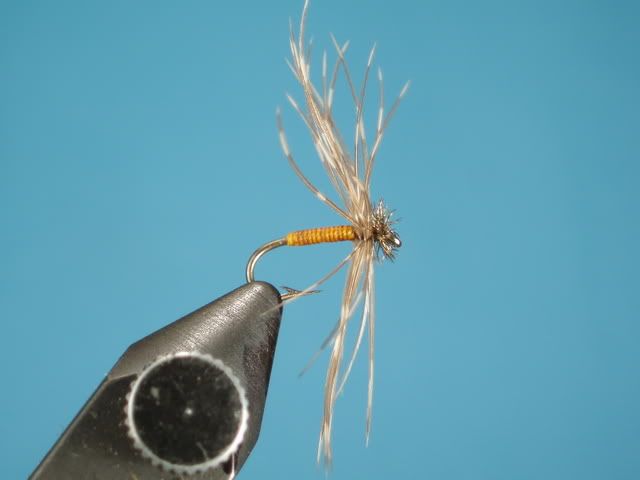
Waterhen Bloa Dark
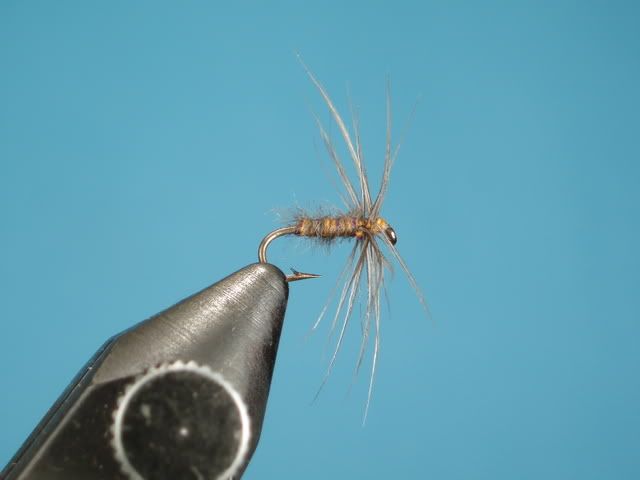
Snipe and Purple
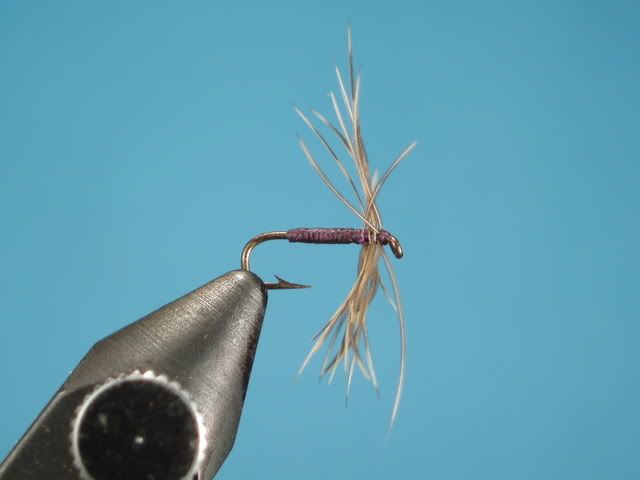
Partridge and Yellow
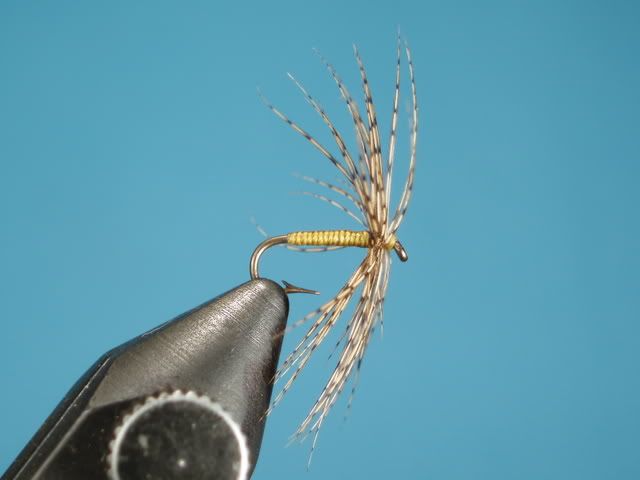
March Brown
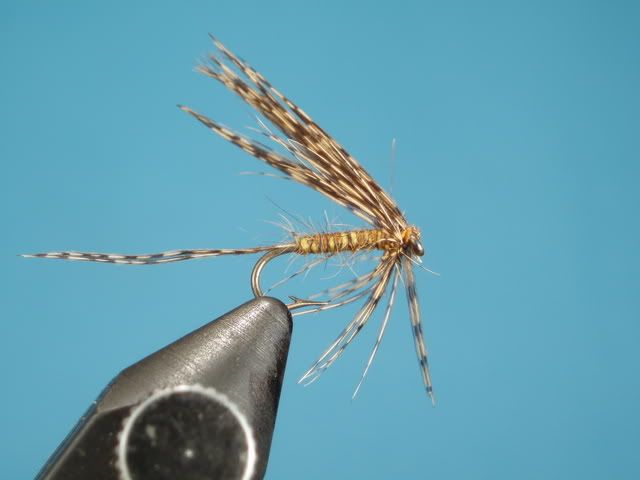
All tied on Kendall Snecks which first appeared in 1887.
And also this, although obviously not a wet and unknown tier.
Blue Dun Quill
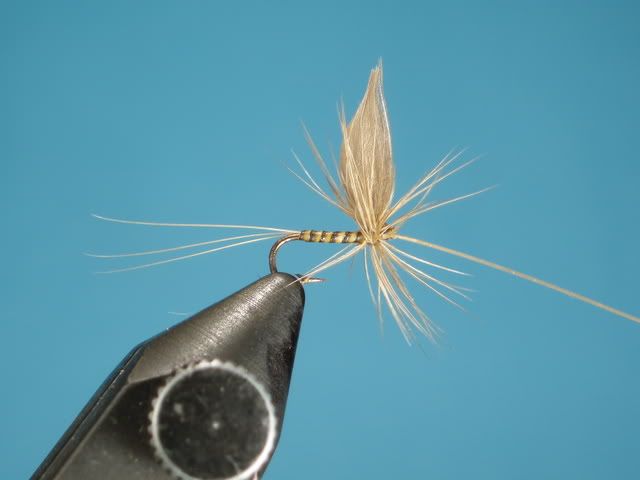

Waterhen Bloa Dark

Snipe and Purple

Partridge and Yellow

March Brown

All tied on Kendall Snecks which first appeared in 1887.
And also this, although obviously not a wet and unknown tier.
Blue Dun Quill


